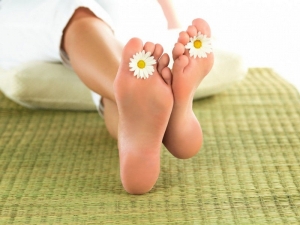Many people who are active and spend enough time on their feet experience dry callus pain. A special type of this formation is the core corn . It is a seal with a central root that does not have a cavity. The defect can be localized not only on the legs, but also on the hands.
Corn does not have any "sexual preferences"; it appears with the same frequency in both men and women. In fact, this is a defense reaction of the body, the purpose of which is to prevent strong friction or pressure on the skin area. In addition to being aesthetically unattractive, the callus is also uncomfortable to walk. And the deeper its root, the more pronounced the pain sensations.
How is corn kernels formed?
If an area of the skin is subjected to prolonged and constant friction and pressure, then the cells of the epidermis, which have become keratinized, do not have time to peel off. This leads to layering and accumulation of these cells, and then to their densification.
In the early stages of callus formation, the patient notices that the skin becomes dry. If no action is taken, the build-up will deepen, forming a solid core. The deeper the corn grows, the smaller its area. If you press pointwise on the top of the formation, severe pain is felt. This pain is associated with irritation by the root of the formation of nerve endings that penetrate the dermis. Corns can cause gait disturbances and lameness.
The most common places of localization of the callus are the center of the heel, the pads of the fingers, and the bony protrusions.
How to recognize a cornice?
The formation rises above the skin, has a yellow or grayish-yellow color. A deepening is noticeable in the center. The corn root sometimes grows in depth not perpendicularly, but at an angle. Its length varies from a couple of millimeters to several centimeters. It depends on the severity of the disease. In rare cases, the root is able to reach subcutaneous fat and even bones.
Provoking factors
Most often, the formation of a callus is provoked by uncomfortable shoes with thin soles, narrow toes, and high heels. It is necessary that the shoes are of the appropriate size, made from natural materials. It is important to take into account that the foot does not immediately get used to new shoes. For example, strenuous exercise in new sneakers can also lead to calluses.
Other additional factors are:
• arthrosis and arthritis;
• flat feet, clubfoot, hallux valgus and varus deformities;
• walking barefoot;
• fungal skin diseases;
• overweight;
• elderly age.
Hands from a callus are much less likely to suffer than legs. Certain professions (carpenter, carpenter, blacksmith), certain sports (barbell, tennis, badminton, horizontal bar exercises), playing musical instruments (viola, violin, guitar) can provoke education.
How to get rid of?
Corns cannot go away on their own. To solve the problem, you need medical help. In the MC "Bogolyuby", corns are removed using the "Surgitron" apparatus. This is a non-contact method, the corn is destroyed by radio waves at the cell level. The liquid inside the keratinized cell evaporates, while healthy tissue is not damaged. The procedure is painless, does not require anesthesia and takes a minimum of time. Upon completion of the manipulation, a thin crust forms, which disappears after 3-4 days. The rehabilitation period takes up to 14 days.

















